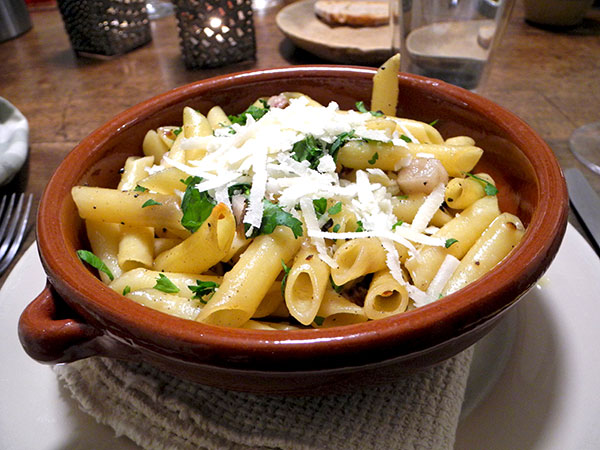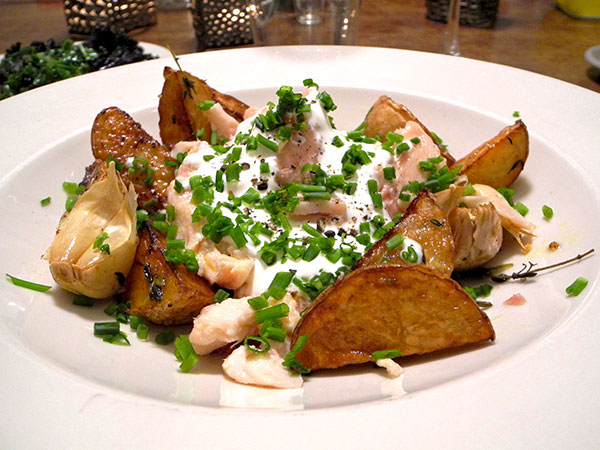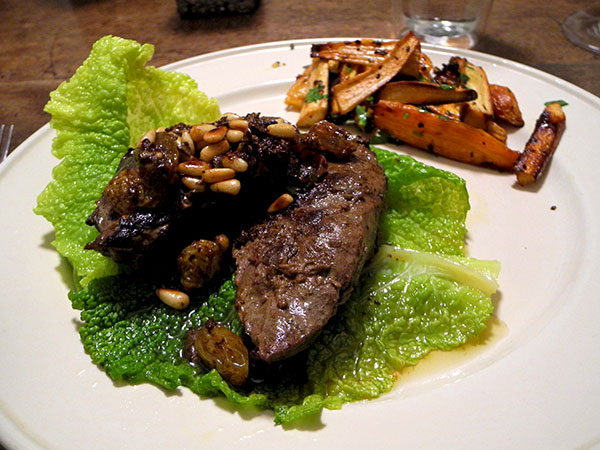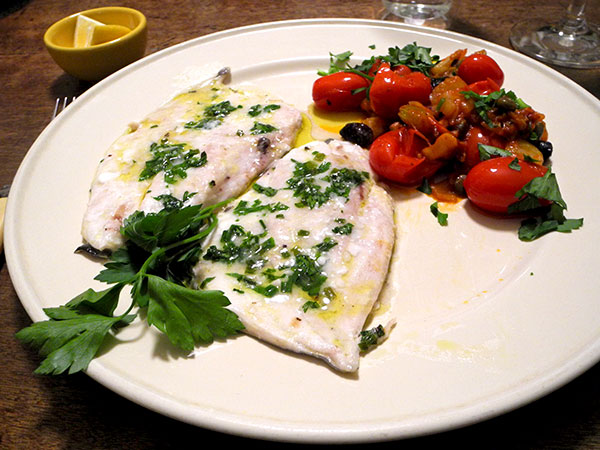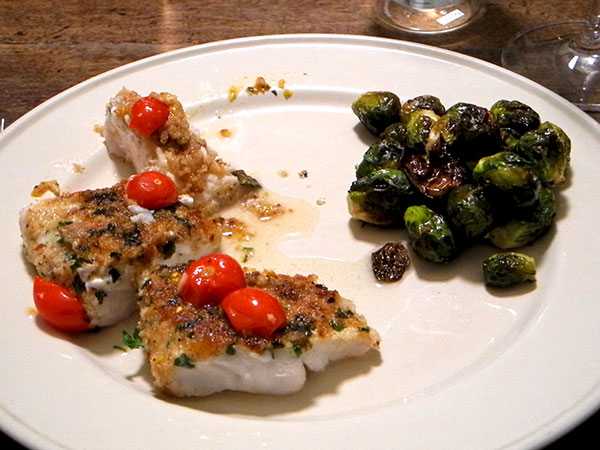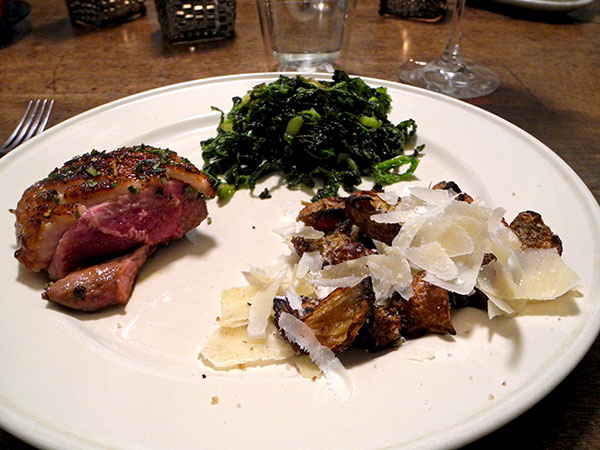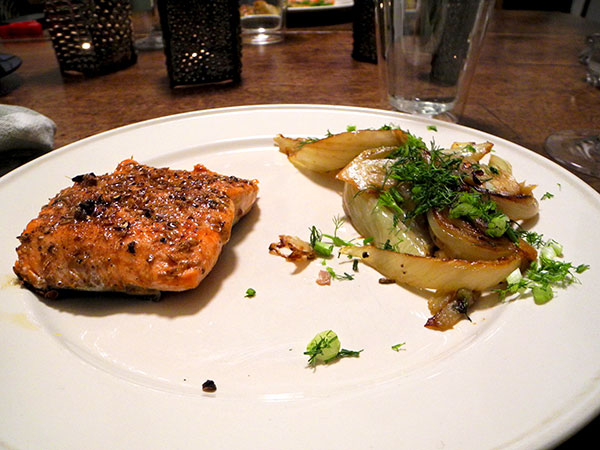Everything looked terrific at the American Seafood stall in the Union Square Greenmarket on Wednesday, but, having no idea of what I would want to prepare that night after Barry and I returned from listening to Laura Poitras speaking at Artists Space, I decided to take two beautiful six-and-a-half ounce flounder fillets (I figured they would give me some creative elbow room). A few minutes later I saw the bunches of sorrel Jim had spread out on one of the Rogowski Farm tables. My dinner was now a plan. As I already had several kinds of boiling potatoes on hand, and a small amount of mixed kales, I was able to return home with an unusually light bag.
- flounder fillets from American Seafood, seasoned, dotted with butter, placed in a ceramic oven dish with a modest amount (1/4 cup for the two) of white wine poured over the top, placed in a 375º oven for 10 minutes, removed and placed on the plates, the juices added to a small pan containing about a fourth of a cup of very good Crème fraîche, which was then boiled quickly until slightly reduced, half of a bunch of shredded sorrel then added and stirred into it before it was spooned over the fish on the plates
- German Butterball potatoes from Norwich Meadows Farm (scrubbed but unpeeled), boiled, drained, halved, buttered, and added to the plate
- two kinds of kale (green and purple) from Tamarack Hollow Farm, wilted with olive oil in which thinly-sliced garlic from Migliorelli Farm had been heated
- the wine was a California white, Wente Riva Ranch Chardonnay Arroyo Seco Monterrey 2012
The second course was simply sections of a very ripe, luscious Bosc pear from Migliorelli Farm, with its bruised area cut off, served with small amounts of two cheeses, sheep milk Brebis Bleu from 3-Corner Field Farm, and goats milk Slyboro from Consider Bardwell Farm.
- we continued with the Wente Chardonnay with this course
While it’s possible I may still see some Bosc pears in the Greenmarket this winter, I was assured today by the farmers that I was enjoying the last of the both the sorrel and the kale. All of which makes me particularly happy that I still have half of Jim’s savory rumex acetosa, as well as an equally sweet-looking bunch of collard greens (apparently also the very last of the season), picked up at Rogowski Farm today as well.
Regarding the earlier part of the evening, being in that crowded room tonight with Laura was an enormous privilege, but it was also a powerful reminder of just how much this country has lost, primarily since 9/11.



